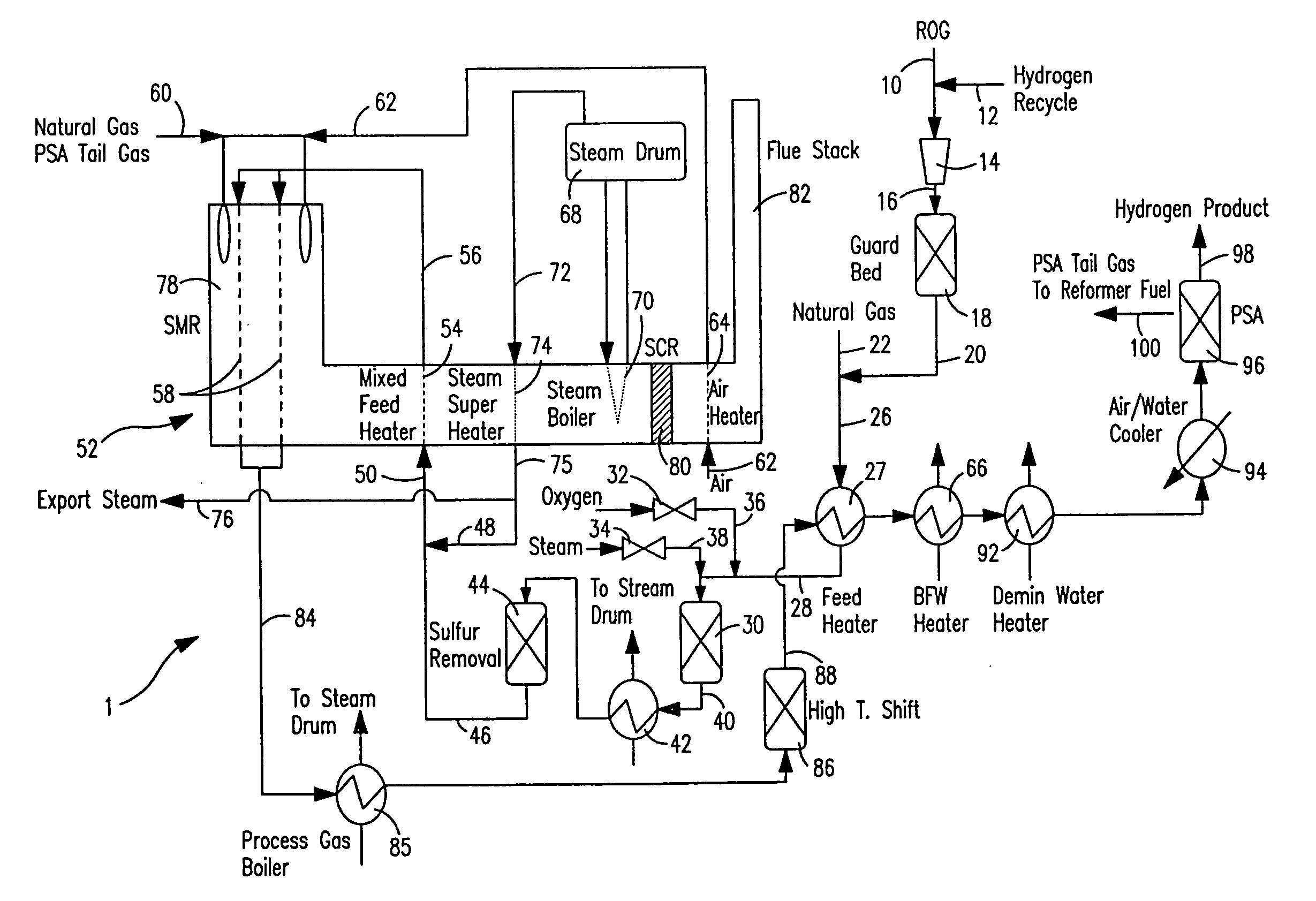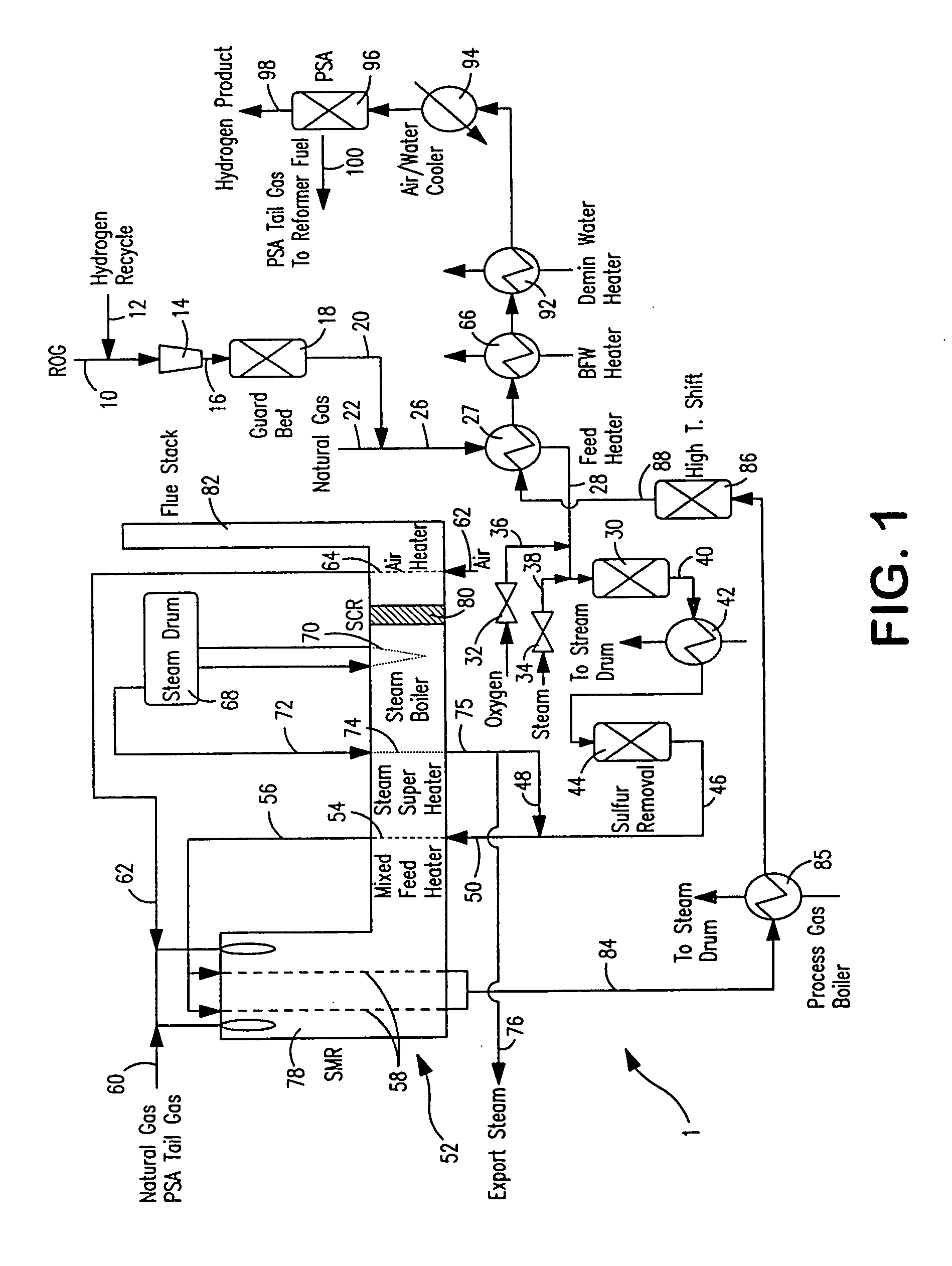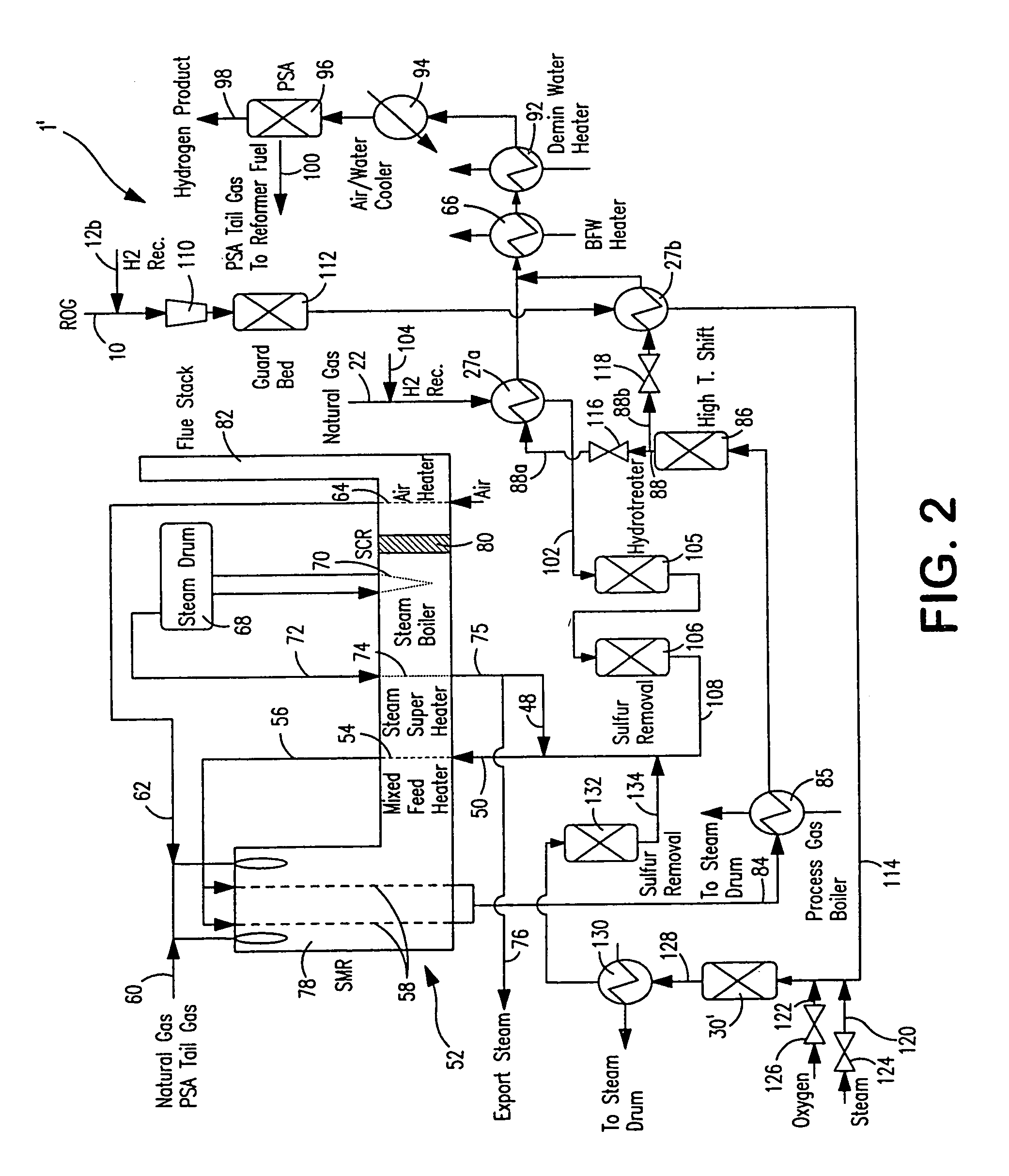Steam methane reforming method
a technology of steam methane and reforming method, which is applied in the direction of hydrogen sulfides, sulfur compounds, separation processes, etc., can solve the problems that olefins cannot be tolerated, and achieve the effects of reducing fuel consumption, reducing the total product synthesis gas and hydrogen production rate, and increasing the mole of synthesis gas product stream
- Summary
- Abstract
- Description
- Claims
- Application Information
AI Technical Summary
Benefits of technology
Problems solved by technology
Method used
Image
Examples
Embodiment Construction
[0038]With reference to FIG. 1, an apparatus 1 is illustrated for carrying a method in accordance with the present invention. Apparatus 1 illustrates the integration of the present invention into a conventional steam methane reforming process to treat refinery off-gases and / or natural gas. In this regard, although the refinery off-gases in FIG. 1 are used in such process to partially replace natural gas as feed to reformer, it is understood that the present invention can be conducted with the object of solely reforming such refinery off-gases or any other gas stream as described above in which steam methane reforming would be problematical due to its hydrocarbon content or have as its sole object the refining of natural gas or other gas stream having a hydrocarbon content that is completely compatible with conventional steam methane reforming techniques. Other streams to be treated may or may not have an objectionable sulfur content to be removed.
[0039]In apparatus 1, a refinery off...
PUM
 Login to View More
Login to View More Abstract
Description
Claims
Application Information
 Login to View More
Login to View More - R&D
- Intellectual Property
- Life Sciences
- Materials
- Tech Scout
- Unparalleled Data Quality
- Higher Quality Content
- 60% Fewer Hallucinations
Browse by: Latest US Patents, China's latest patents, Technical Efficacy Thesaurus, Application Domain, Technology Topic, Popular Technical Reports.
© 2025 PatSnap. All rights reserved.Legal|Privacy policy|Modern Slavery Act Transparency Statement|Sitemap|About US| Contact US: help@patsnap.com



